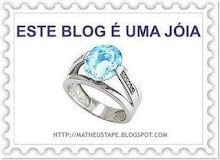


MADRID (AFP) - A tomb decorated with 3,500-year-old paintings has been discovered in Luxor by a Spanish Egyptologist, Spain's scientific research agency (CSIC) announced.
The tomb, part of the Dra Abu El-Naga necropolis, also includes drawings and hieroglyphics taken in part from the Book of the Dead, the ancient Egyptian funerary text, and could be that of a senior functionary named Djehuty, the CSIC said.
The person was in the service of the 18th dynasty Queen Hatshepsut, the most powerful female pharaoh and who ruled for 21 years from 1479 to 1458 BC.
The burial chamber of about 3.5 square metres (37.6 square feet) and 1.5 metres (five feet) high, is one of the first to have been entirely decorated with paintings from the era, said the Spanish Egyptologist who made the discovery, Jose Manuel Galan.
Galan is head of the team that has been carrying out excavation work for several years in the Dra Abu El-Naga necropolis on the west bank of Luxor for the CSIC, a project financed since 2004 by the Caja Madrid foundation.
Archaeologists in 2007 identified a mummy found in a tomb in the Valley of the Kings in Luxor about a century ago as that of Hatshepsut, who declared herself pharaoh after the death of her husband and half-brother Tuthmosis II and was known for sporting a false beard and dressing like a man.
Descubren tumba egipcia de 3.500 años de antigüedad
La tumba, parte de la necrópolis Dra Abu El-Naga, incluye dibujos e inscripciones tomadas del Libro de los Muertos, el antiguo texto funerario egipcio, y podría ser de un alto funcionario llamado Djehuty.
Fuentes:
Yahho News
CSIC
























































































































![Validate my Atom 1.0 feed [Valid Atom 1.0]](valid-atom.png)


2 comentarios:
3500 años! Ufff! Impresionante hallazgo, y lo que falta...
interesante...gracias por compartir.
Publicar un comentario